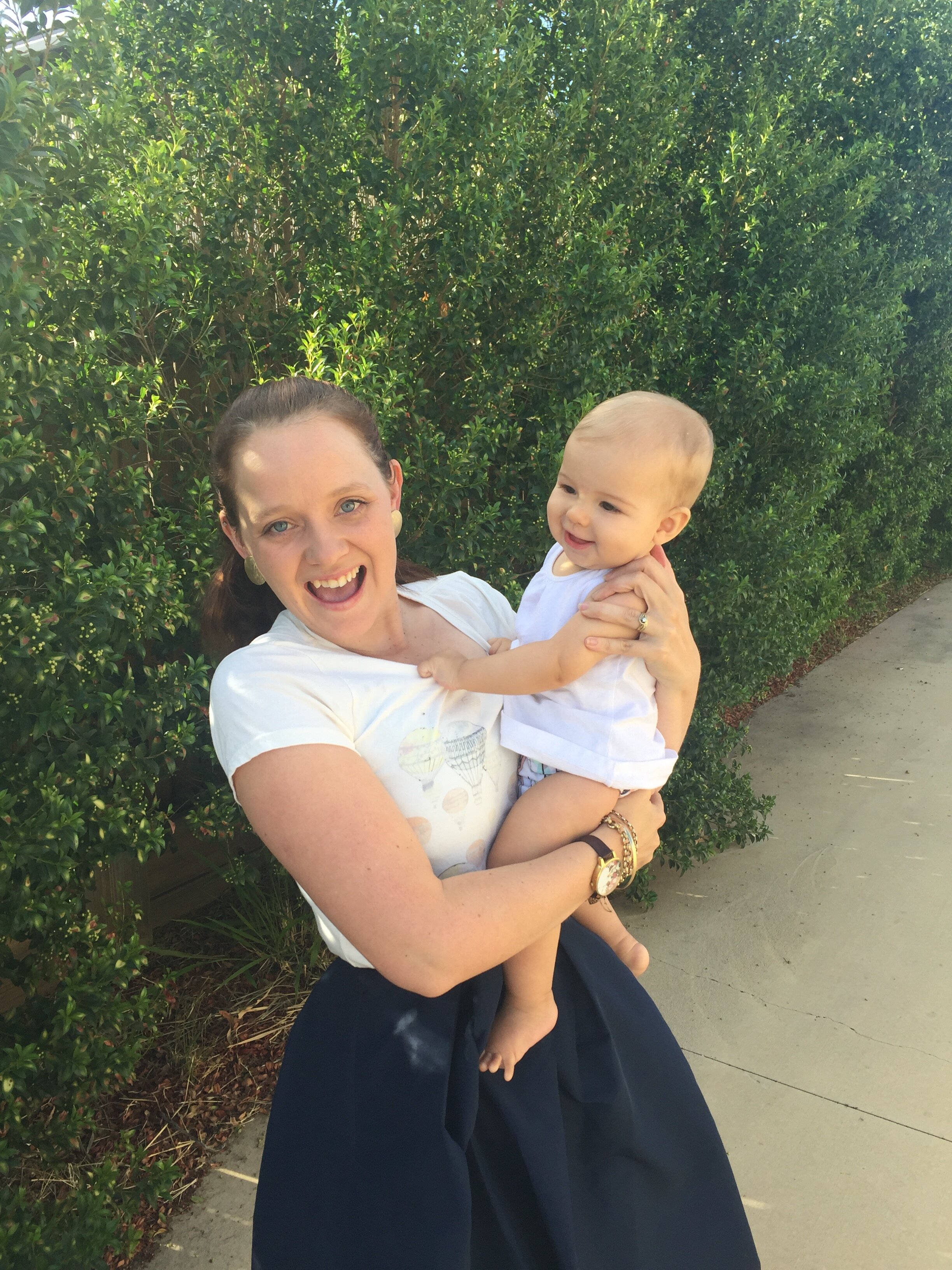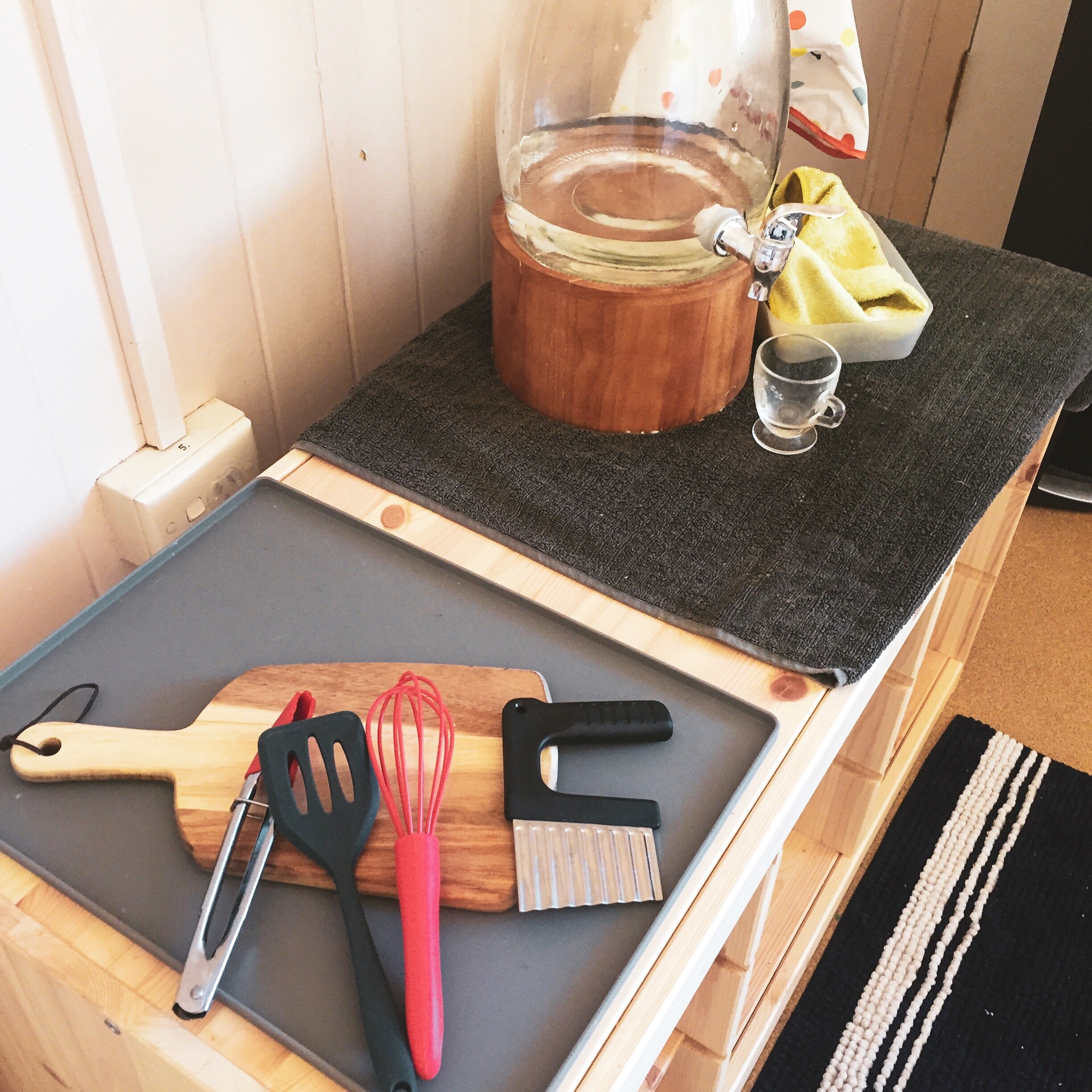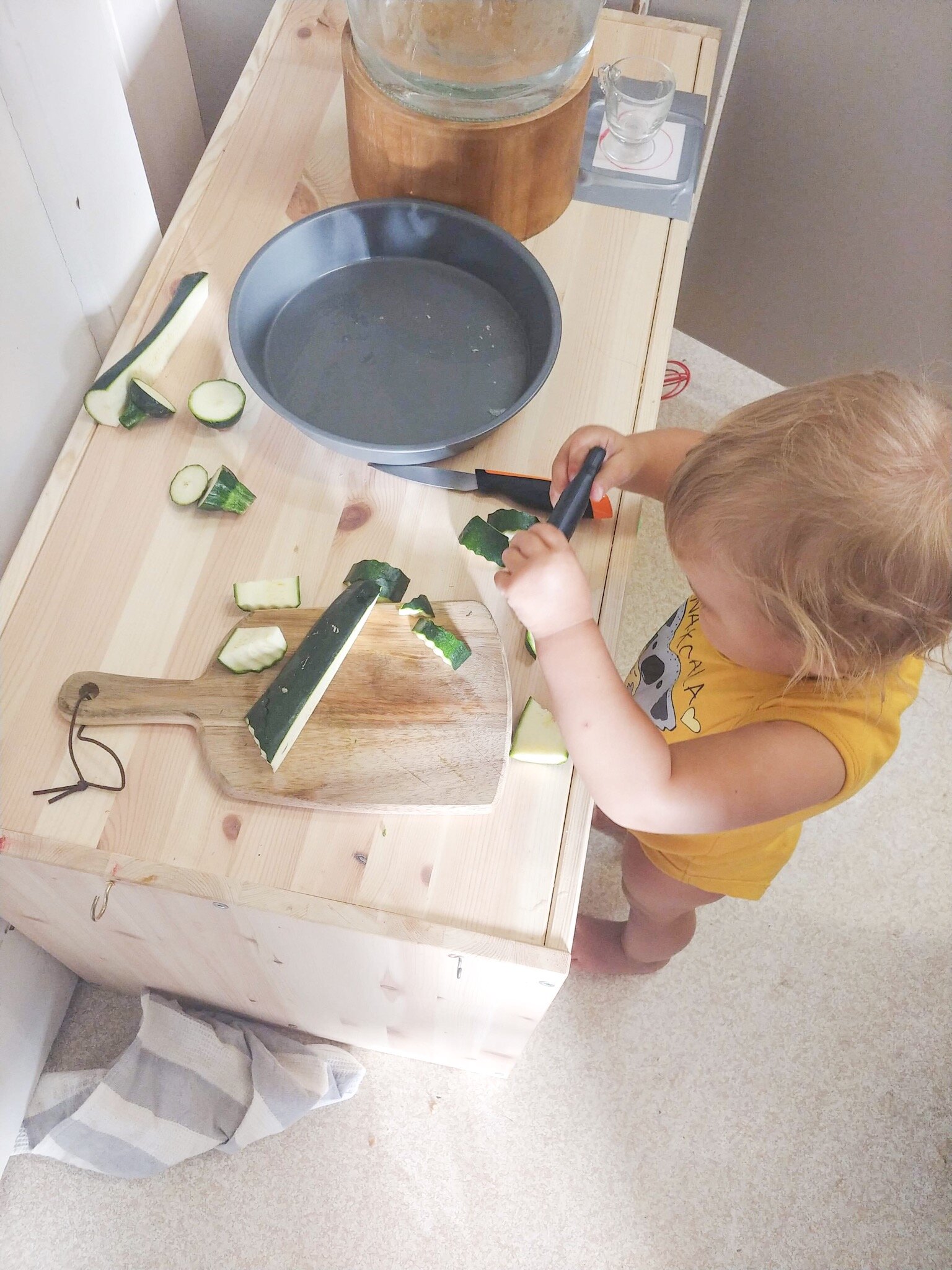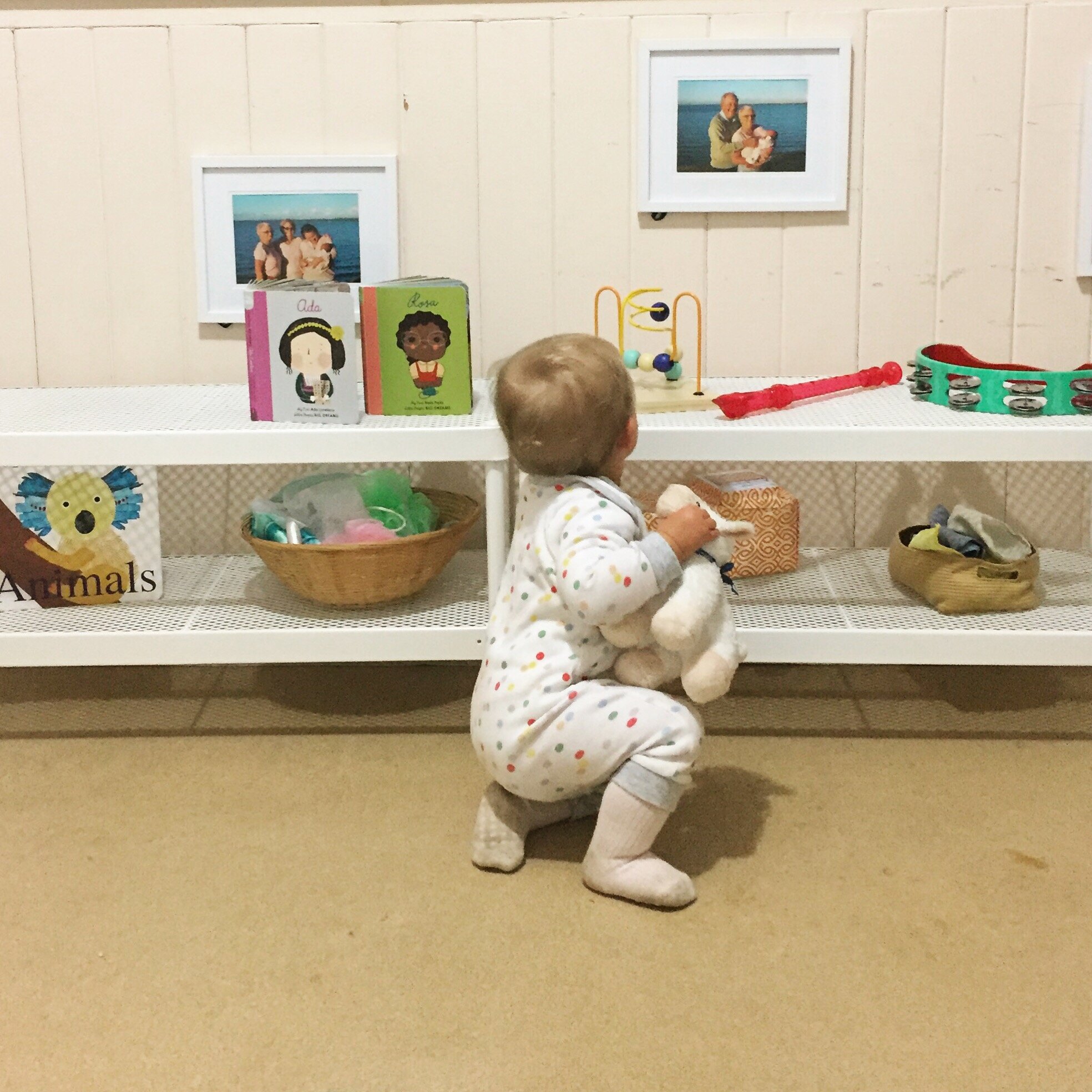KonMari® & Montessori Homes: Guest Interview (Part 1)
1. Hi Tiffany! Tell us a little about yourself and your family.
Tiffany: Hi, my name is Tiffany. I am a teacher, a traveler, and an avid Netflix binge-watcher! I met my hubby when we were both in school and have been inseparable ever since. In 2018, we become the proud parents to a little girl, Little Ninja, who is full of life, determined, and oh so cheeky. We currently live in Queensland, Australia, and love living in our sunny corner of the world. Yet we cannot wait to continue our travels further afield, since birth Little Ninja has already explored parts of Europe (next on her list is Germany and Scotland … and Yorkshire)! When travel restrictions lift, we will be on a plane and exploring more corners of the globe. I work full-time while hubby is a full-time university student and the most amazing stay-at-home and Instagram dad taking most pictures for me!
2. I love how your home is designed keeping your child’s needs in mind using KonMari® and Montessori principles. Could you tell us a bit more about when it all started and what drew you towards integrating these principles while preparing your home environment?
Tiffany: It was really a stumble into a different world. One day, my husband and I sat down as new parents discussing our goals for our child, and for us, our key goals were independence, strength, and happiness. A quick search through Instagram and I found some amazing accounts that truly opened my eyes to what my daughter could be capable of, and I remember sitting & showing the videos to my husband, and his first response was “that’s intense!”.
This wasn’t about comparison but rather, for the first time I truly shifted my thinking to see my daughter as truly capable and an individual from birth rather than an individual that needed me for everything. As I dug deeper into the principles, I was drawn to the level of respect and trust given to the child, as an equal voice within the family. I want for my daughter, to feel accepted as she is, to have the autonomy, and to grow up knowing I trust her and that I believe in her capabilities.
So in the design of our home, we have focused on providing a space that allows her to access items to meet her own needs. She is able to open any door, use all equipment, and has full access to each room. This has taken some creative problem-solving and moving of items, but this allows us all to work within the environment.
3. What does your daily rhythm look like for you and your child at home especially now when the world is getting used to a new “normal”?
Tiffany: Our days vary depending on if it is a daycare day, however, we have some clear rhythms each morning and night to provide routine and structure that maximises play while ensuring we get out the door in time.
I try to get up before Little Ninja each day to ensure that 'me-time' is prioritised, we start the day with breakfast and then play. Each morning I set up something by taking it off the play shelf and placing it in the middle of the room, nothing complicated but it “forces” us to play. While I play, hubby organises then we swap. For her, the focus is on one-on-one time and play. We then get dressed and she gets herself ready and goes to the car. Some mornings it is straight to daycare and others it’s coffee and the park!
In the afternoons we cook together at about 4 & have an early dinner as a family. The next favourite part of my day is our walk that we do after dinner. Again, this is prioritising myself, my hubby, and exercise. We take the pram, toys and a book, we look at the stars, we talk about the moon. Once home, I set up another invitation to play (again not complicated), it could be as simple as pulling out a puzzle or setting up the blocks. Followed by our bed routines.
The key to our daily rhythm is about prioritising one-on-one time, self-care, and play. We have continuously tweaked and reviewed this over the last two years. We will continue to review, revise, and test out new rhythms to suit each of us as needed.
4. How do you involve your child in keeping your home “organised”?
Tiffany: There are a few key parts here, setting up the environment, and then maintaining. In setting up the environment, remove clutter, the less there is to clean, the less effort required. We have roughly 5-6 toys out at a time and a clear place for each using trays and baskets to organise each toy. To maintain this, we use toy rotation and keep all our other toys in a separate room and packed up. Each month (ish) we swap toys based on her interests and observing the skills she is attempting to work on.
The second part is about clear routines that encourage organisation. We encourage and remind Little Ninja to pack up; we invite her to help and then model the behaviour. This doesn't change overnight and we don’t force cleaning, but rather, make it part of the day. We tidy up toys before each meal, leaving the house, and going to bed. In terms of cleaning, we set up the kitchen sink for her to wash with us, include her in washing her clothes; it is always an invite not an expectation, and has been so since birth. By actively including her, the aim is that it just becomes a habit rather than a chore.
5. What are some tips and/or resources you could share with parents who want to design their home using KonMari® and Montessori principles?
Tiffany: The biggest tip is to adapt it to suit you. Focus on your child's capabilities and building their independence.
Montessori at home does not need all of the items, materials, or setups used in a classroom. Maria Montessori set up her classrooms to mirror the home environment, therefore Montessori at home isn't about materials. Instead, it is about adapting your environment to allow your child/ren to fully participate in their own life, smaller utensils, materials at their height, and the time to attempt tasks on their own.
Be mindful too of the term ‘Montessori’ on children's toys, it is used a lot and doesn't always align with the true principles of Montessori. If you are looking for a place to start, you can not go wrong with reading The Montessori Toddler by Simone Davies.
Thank you, Tiffany, for your insightful sharing, for giving us a “peek” of your living spaces, and for showing us that children are extremely capable of loving & caring for their homes!
To check out Tiffany’s Instagram account, click here. You can also read about her parenting journey on her blog here.




